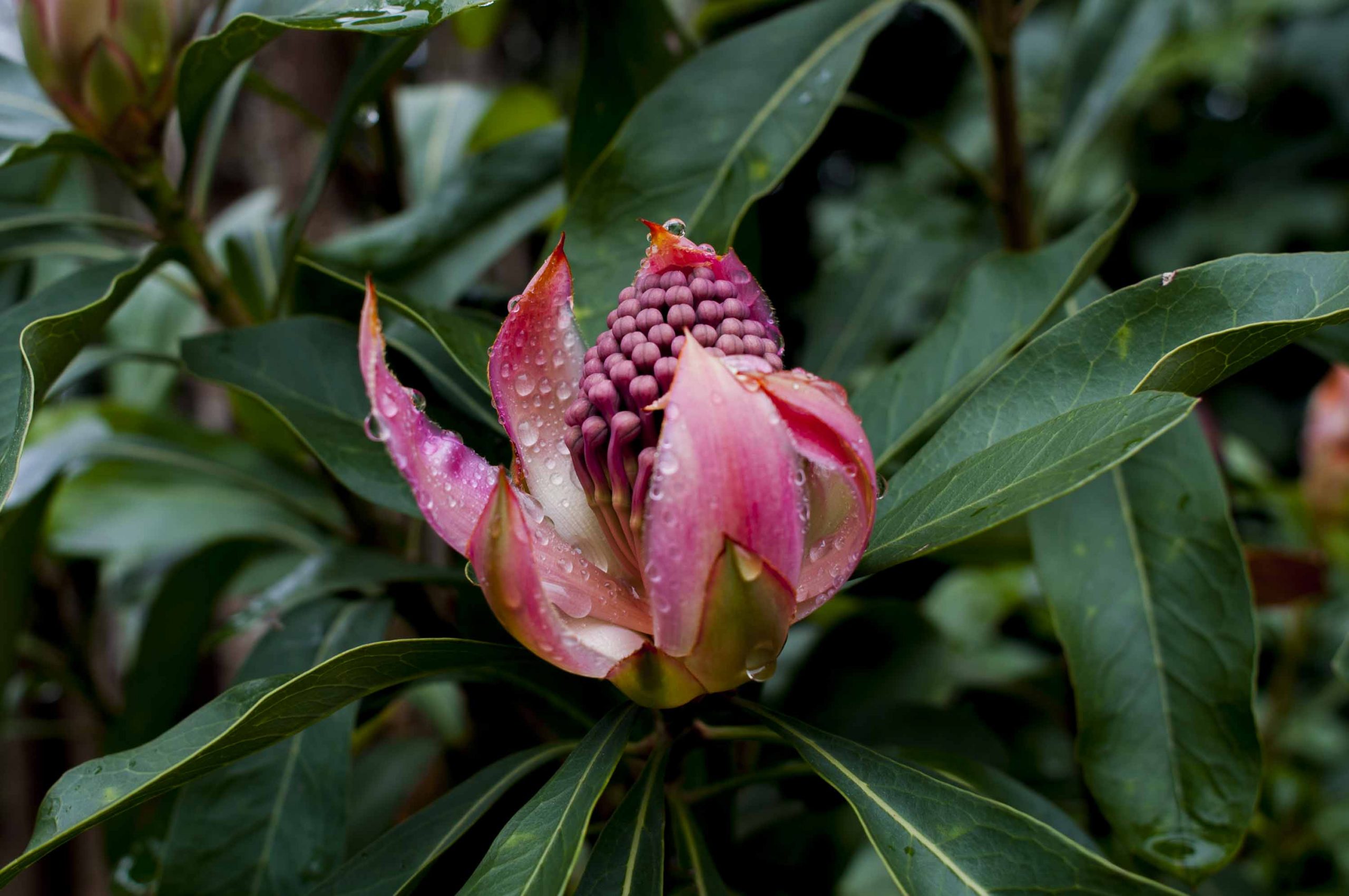“The still point of the turning world”

- Words by
- Georgina Reid
“There’s a crack in everything, that’s how the light gets in”, sang poet Leonard Cohen a few thousand times. It can be said our world is cracking, has cracked. One of our worlds, anyway. Darkness seems closer these days, waiting for an opportunity to lurch into frame, obscuring familiar views. First it appeared in the smoke haze and still-smouldering devastation of an Australian summer. Then, from a city far away it grew roots and twined its tendrils across our planet. Strange things happen when worlds crack open. Contrivances evaporate. True things reappear. We reach for the people we love. We hold tight to the things that ground us. We garden.
Much has been made over the last few months about the resurgence of gardening. Is it, as some have suggested, merely a survivalist response – buying seeds for food, chickens for eggs – that kind of thing? Or is something more integral, primal, rising to the surface?
It’s worth remembering that the word human stems from the word humus, of the earth. It is in our darkness that we refuse our origin story. It is in illumination that we remember. We are both light and dark and the muddy spaces in-between. It is from the earth, from the muck, we grow. Of course we garden.
And yet, gardens are curiously inessential places. They’re not bound to our biological survival; they’re sort of art, sort of not; they’re transitory; they’re human and entirely non-human. “The fact that human beings create such things as gardens is strange,” writes Robert Pogue Harrison in Gardens: An Essay on the Human Condition, “for it means that there are aspects of our humanity which nature does not naturally accommodate, which we must make room for in nature’s midst.” He suggests that “gardens mark our separation from nature even as they draw us closer to it”. That gardens respond to a “set of human needs that are not reducible to our animal needs.”


“…even in the most disenchanted of habitats, where the premium is on survival, gardens have a way of cropping up,” Pogue Harrison continues. I think of gardens made by refugees waiting in camps in Tunisia; of gardens made in war zones; of the last flower seller of Aleppo; of tiny street gardens, of potted suburban front yards. Of my own wild plot by the river; a place I’m willing to devote much of my spare time and resources to, for reasons I cannot fully articulate. A place that is, to borrow from T.S Eliot, my “still point of the turning world”.
And maybe that’s it. As the world shakes and shudders and rattles, as talk of economy and freedom and life and death bounce from screen to ear to mouth to mind, gardens – both public and private – offer both more and less. They bring us into awareness of light and dark, sun and shadow in ways both human and other. A garden is a tether to the earth. At a time defined by a deep sense of unravelling, an opportunity to be still – to feel a sense of groundedness – is a gift and a privilege.
“It turns out that groundedness requires actual ground”, suggests Jenny Odell in How to Do Nothing: Resisting the Attention Economy. It turns out, too, that access to ground is not equitable. As Jo Tovey writes in The Guardian, the coronavirus crisis has highlighted the importance of public infrastructure previously taken for granted. “Where we once watched on as governments neglected or imperilled our robust social safety net and public healthcare system, we now better understand what is at stake. I would add accessible green space in our cities to that list.” Tovey highlights a study in London showing that a third of all land in the wealthiest 10% of London districts was taken up by private gardens, while in the poorest 10%, gardens took up just over a fifth of the land area.
According to a NSW Government study, the majority of people living in western Sydney drive for around 30 minutes to access public recreation facilities. 75% of inner and eastern Sydney residents can walk to a park within 15 minutes. “The quality of your lockdown period is likely to vary pretty wildly depending on your access to such spaces for respite,” suggests Tovey.
Accessible green space is essential infrastructure. Public and private and community gardens are essential infastructure. Trees are essential infrastructure. Other-than-human nature is essential infrastructure. Might this current world-cracking event clear the dust from our lenses, enable us to see the forest and the trees? I don’t know, but I hope. I do know that the urge to garden during this current pandemic may have originated for some from a place of self-protection, but grows from somewhere much deeper than that.
Respite, groundedness, growth, stillness. So much of what can guide and calm an anxious mind, a bruised heart, a cracked world, grows from the soil. Including us. Remember: humus, human.
And as the light streams through the splintered shell of our imaginings, illuminating all that is broken and dark and sore, may our gardens and our ground remain, as ever, the still point of the turning world.
–








